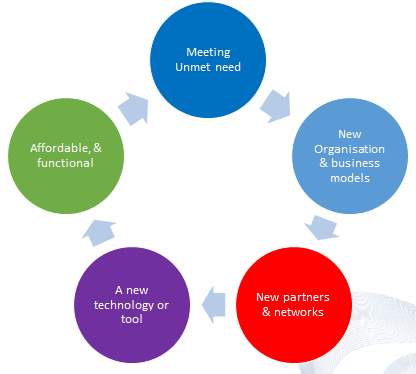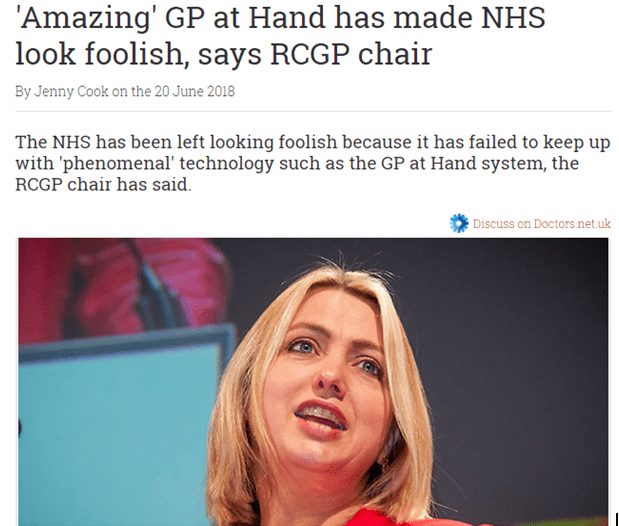https://www.gponline.com/amazing-gp-hand-made-nhs-look-foolish-says-rcgp-chair/article/1485556
I got up this morning and was greeted by a number of very interesting articles. One being Dr Atul Gawande appointed as new CEO of the new Amazon, Berkshire and JP Morgan Chase venture. The second is the above article out from the UK. I am sure as with all media reporting there will more behind this article. What is interesting are some of the relevant points being made in this article – reform contracting & funding, cherry picking and long term sustainability of traditional general practice.
New entrants, with new technology, with new networks and ways of working, with new partners require changes to contracting, funding as well as other aspects of a new business model. Yes, the GP at Hand is a trial in a particular location but scaling from a few thousand to 30,000 sends a loud message of what is coming down the pipeline.
Introducing such a disruptive innovation as GP at Hand without equally disruptive reforms in funding and contracting is likely to be the main reason for fiscal hole faced by Hammersmith and Fulham CCG. It warned that it needs a bailout of around £18m in 2018/19 to cope with the surge in patients arriving at the Lillie Road Medical Centre, which hosts the GP at Hand service.
Cherry picking is a combination of the new entrants making it easy for patients to switch and it must offer a value proposition that patients want – interaction with healthcare service that looks and feels more like the way they live the rest of their lives. Over 21,000 of the 30,000 are between 20 and 39 years old – all of them will have a smart phone or similar device…this is their world and increasingly for the older age group as well.
GP at Hand will not solve every problem in primary care and no doubt not everything with GP at Hand is going to be perfect. But it supported by a digitally empowered platform model that can change and scale at much faster rate than traditional models.
The long term sustainability of traditional general practice requires a “dual transformation” approach where the first part is focus on re-positioning the current model and the second part is to deliberately create something new for the future. If you hear existing leaders say that they do not have the time, energy or funds to create the new because they are too busy “keeping their head above water”…..this is a massive warning bell going off! This group of people need help that will only work if they are prepared to be open to new ideas, new partners, new networks, new business and operating models. The reality is some will constructively go forward and some will argue themselves into a standstill and wait for the future to overtake them.
Given everything else that is going on in NHS, hopefully this trial does not just remain a trial. Going forward contracting, funding and other aspects of a digitally empowered platform business model (use of data, new skills and knowledge, workforce re-training, facilities re-design, etc) needs to be addressed as well.
Two helpful frameworks
Here are two helpful frameworks to use when looking at disruptive innovation in service change. The first framework is what I called an “Integrated framework for service change”.

The framework makes the point that for long term sustainable service changes all 4 domains as set above needs to be changed. The parts that get the most attention are “models of care, funding, workforce and technology”. The parts that get the least attention are organisation and business models.
The second framework is what I call “Features of disruptive innovations”

Disruptive innovation will touch these 5 domains. If we look at closely at GP at Hand it has touch all 5 domains.
Final word
My personal view is that most First world countries health system will face significant disruption within 5 years and certainly in 10. Some of today’s political, health, business and community leaders understand this but do not like what they see. Others still do not understand this exponential pace of change. Fortunately there is emerging some leaders that do get this and not afraid to let go of the past and current that are no longer relevant for a chance to shape the future. Which of the three groups do you belong to?

